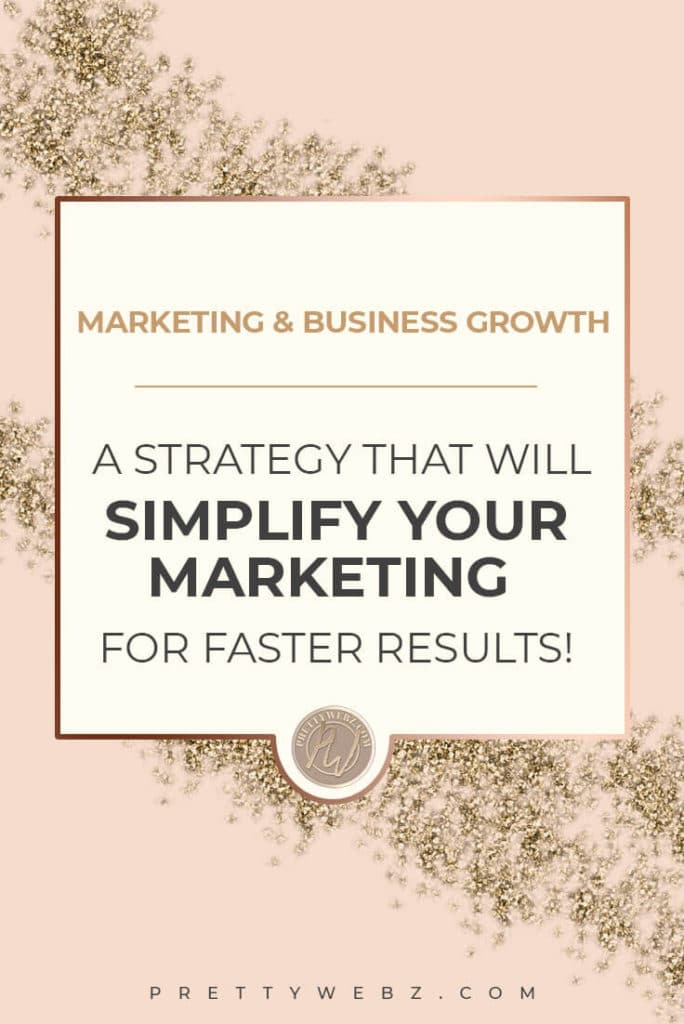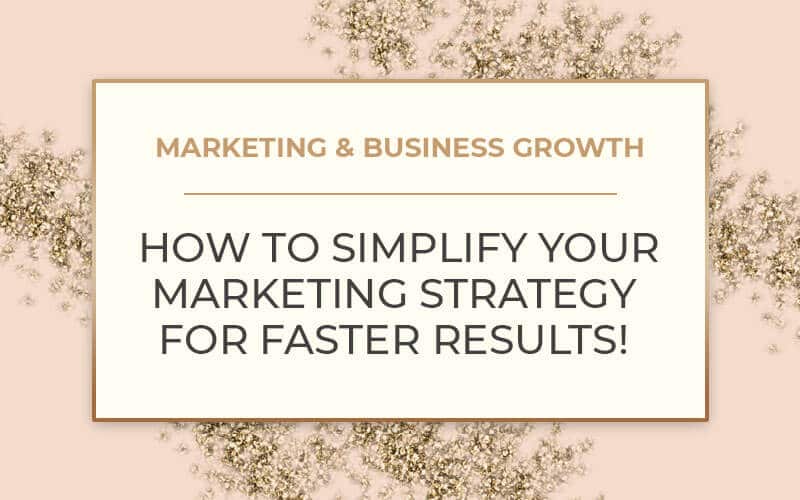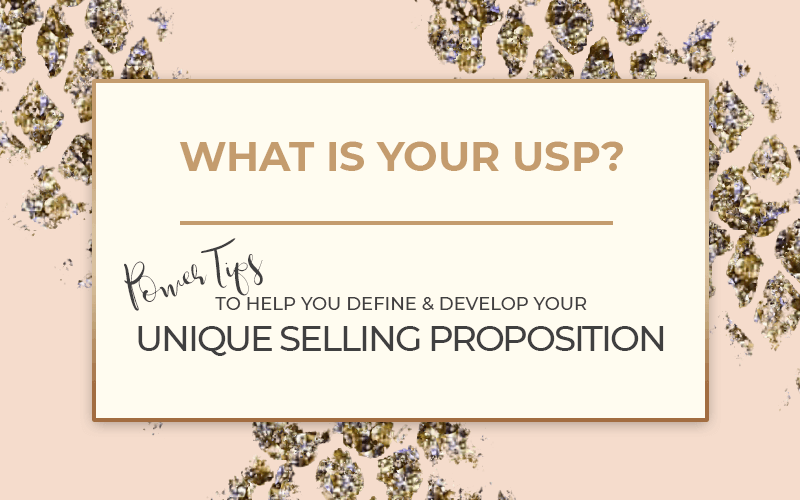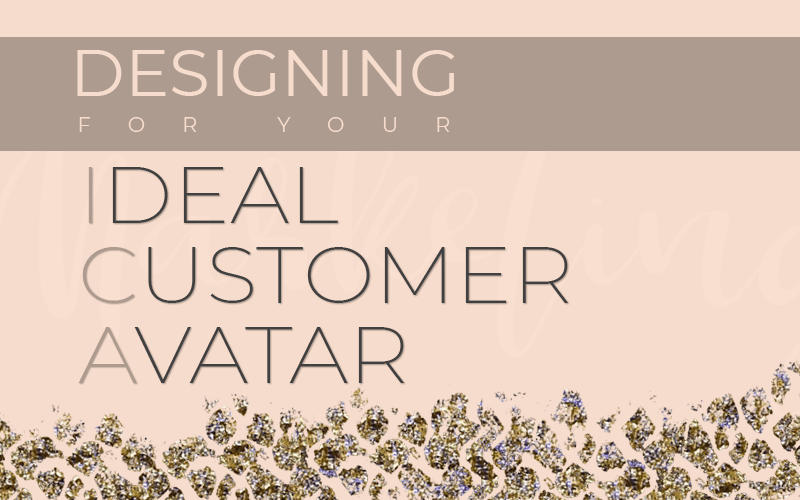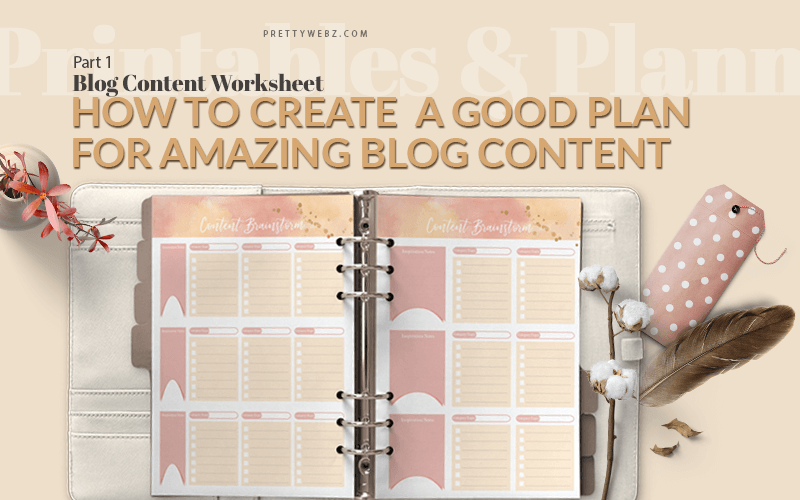How to Simplify Marketing for Business Growth
Marketing a business online can be tricky. Growing a business can be challenging. These statements are especially true when you’re trying to follow all the strategies and tactics everyone tells you are the “secret” to success. There are three phases when marketing and business growth strategy must align to create effective marketing for business growth but there is no secret to success. You have to do the work, set the goals and figure out how to accomplish them.
Here, I’m going to break it down and give you some guidelines to make it as easy as possible for you to know what you should be focusing on at each point in your business. There’s no need to try everything if your business is not ready, you’re wasting valuable time.
Strategic Marketing and The Business Lifecycle
There are three levels of focus when marketing for business growth to work well. It’s a common consensus that there are five stages to a business lifecycle. These stages are seed, startup, growth, expansion, and maturity. In this case, we’re focusing on how all of this relates to marketing for business growth. To simplify it, I’m bundling seed and startup into the foundation and expansion and maturity into sustainability. We’ll leave growth alone. Here is my breakdown of the three fundamental phases of business growth.
- The foundation – Ideation, set up, planning and building the business
- Continued Business growth – Branding, organizing and streamlining the business
- Sustainability of the brand – The brand matures, branches out, either expands or declines
Planning the Marketing for Business Growth Strategy
In order to identify the proper marketing goals for your brand, you need to focus on the results you want to achieve and work back from there.
Planning the marketing process can take on a big-picture view of marketing and growth goals for your entire brand. However, it doesn’t have to be that comprehensive. You can focus on marketing for business growth goals at a more finite level. In this case, you’re defining marketing tactics and strategy for specific email campaigns, sales funnels, social media, and other linear marketing efforts.
The main focus is to do the right type of marketing at the right stage of the business lifecycle.
Keep these questions in mind when you’re working through the marketing for business growth planning process:
- Which part of the lifecycle is your business in right now?
- What is the desired effect of the campaign that you’re launching?
More Posts on this Topic
Goal Setting and the Building Process
You know you have to grow, expand and all of that stuff but growth and expansion can’t happen until you build a foundation. A business is much like a house. You can’t build a roof without walls and you can’t build walls without a foundation. Once you’ve identified where you stand now, you can identify what is most important for your brand. Then begin to work towards the right goals for your situation.
Your overall goals during this three-step phase are easy. The goal is either building a foundation, growing the business or sustaining the brand. The ultimate goal is easy but the strategy and tactics for getting there are not as black and white. In order to identify how to achieve your goals, you have to identify what the right goals are for your business at the stage it’s in right now.
Once you have your first step goal, reverse engineer and deconstruct the goal to establish the steps you need to take to accomplish it as it pertains to your specific niche. Let’s talk a little more about that.
The Uphill Battle for New Business and Startups

When you’re a new brand you face many different challenges than your existing competitors. For one, you have to establish trust and a following. Second, you’re doing this while simultaneously trying to work out logistics and positioning for your new business.
It’s important to go in knowing that existing competitors are not clawing for market share, you are. For a new business, advertising will cost more, building a following will be slow without a big marketing budget and trust can only come with time, patience, commitment, and consistency. Running a business is a long uphill battle, prepare yourself.
The Critical Choice
One of the most difficult decisions for a new business to make is the approach to building a customer base.
Creating a Foundation
In the beginning, you have a tough choice. You are going to give up a lot of desperately needed capital for quick exposure through marketing. Or you are going to go slow and steady and build your following with helpful content and relationship building. There are pros and cons to both strategies.
Creating an MVP (Minimum Viable Product)
A huge push on marketing, in the beginning, can bring in a lot of traffic. If you’re putting it all on the line upfront at the very least, make sure you have a minimum viable product. Not something you “know” people will love.
It’s common to get excited about something, build it and launch it to crickets. Your friends and family will tell you your idea is amazing. Unless your friends and family support includes dropping some cash to get in line for the first one, their opinion means nothing.
If you don’t know the market you’re serving well and know how to talk to them in a way that resonates with them, you’re in trouble. You could blow through your budget without gaining much traction. Prepare yourself for tons of market research, interviews and adjustments to your product before you launch.
Creating a Product Around your Audience
The second option and the option I chose for my own business is the slow and steady method. This strategy will give you a good foundation and help you get to know your buyers. You could even build the brand and offer products around your audience later on.
Once you have an established audience, they will tell you what they want. When you build it, they’ll be waiting eagerly to snap it up. The business will have low marketing cost because you have a healthy base to market to. But there’s still a cost.
It’s a long road to sales and you will be bleeding money along the way. Though not as much as you would with an initial marketing blast. Still, it will be some time before you see good profits.
How to Build an Audience, credibility, and trust

Whether you decide to put your cash flow on the line upfront or take it slow, your priorities and primary focus when creating a foundation for your business should be brand awareness and generating content. Both of these elements are necessary to build an audience, credibility, and trust.
Let’s look at some examples of what creating brand awareness and generating content might look like. Keep in mind, these are general descriptions. Every business is different and will require its own unique tactics for achieving these goals. However, if you are a brand doing business online these are very common approaches to creating a foundation.
Brand Awareness
Brand awareness happens by creating marketing campaigns and social media campaigns with the goal of getting recognition for your brand and not necessarily to sell a product. This would include a variety of potential marketing efforts.
- Working with influencers and collaborators to promote your product or service can help create trust.
- Creating and running ads via social media and search engines will help create familiarity with the brand.
- Adding a blog to your website will create awareness, credibility, and trust.
The time before beginning a launch or starting a major marketing campaign is the most critical time for having conversations with your potential customers on and offline. Don’t leave it all up to marketing. Make connections with the people who will buy your products.
Generating Content
Creating content is the cornerstone of the slow and steady method for building credibility, trust and ultimately an audience. The goal of generating content such as social media posts, blog posts, and videos is to inform your audience about the benefits of your product.
Your goal is to persuade them that your products are the solution to their problem. Creating content also reminds your audience of your products and their benefits.
Even if your audience is not ready to buy, generating content will help you stay top of mind with your prospective customers. Often times people will find the value in your product but are not prepared to purchase at the moment.
Producing content that they can go back to again and again is a great way to help them learn. Empowers them to make decisions and also keep your company top of mind. When your prospective customer is ready to purchase, you will be the company that they go to because you provide value.
Sales Strategies in The Foundation Phase

While you are building your foundation, you will need a way to capture the audience you’re building. If you’re using things like Facebook pages or Instagram you probably think that you’ve already captured them.
Easy Access is Not Always the Best Approach
Social media by far is the easiest way to promote your products. This is also the weakest foundation for your business.
Let’s say you’re building a strong following on social media and the numbers are there. Do you think that you can talk to your Facebook audience whenever you want? You Can’t.
If you’ve been at this for a while then you know that Facebook and any other platform can take your audience from you whenever they want, restrict how you speak to them and how many people see your posts. Even worse, they can wipe out everything you’ve built in a matter of minutes.
I used to get amazing engagement on my Facebook page. Now my Facebook page is a wasteland. I don’t even bother with it anymore. There are still tons of people who like my page but what good is the number if Facebook won’t show my posts to anyone? If you’ve worked hard to build a social media following and have seen this happen, you know the frustration here.
You’ve done a lot of hard work getting people to your site and building a following on social media. In my experience, traditional ways of using social media is a waste of time. I wouldn’t give it up altogether but I wouldn’t put all my focus there either.
Facebook groups are valuable for collaborations and just talking to potential customers and other business owners. Instagram has tons of great marketing features like stories, IGTV, and shopping tags but that doesn’t mean they won’t take those features away.
Creating an Email List
Through my experience with Facebook and other social media platforms, I’ve discovered that you need to own your following. I know you’ve heard this a million times from all the gurus.
Listen to them, this advice is gold!
Stop focusing all your attention on social media and vanity numbers and start building your strongest marketing tool. An email list.
The best way to own your following is through email marketing. Sure, your messages could go to spam but far more will get opened and you will see so many more clicks and engagement with your content than on social media.
The best long-term growth strategy is to capture your audience with an email list and nurture that list like it’s worth millions. It could be worth that and more someday. You create tremendous marketing power when you’re able to speak directly to the consumer on your own terms, not the terms of your social media platforms.
Brand Growth

Planning and goal setting for your marketing campaigns at this stage in your business looks different. Your marketing for business growth goals are different. At this point in your business, you already have an established audience. People trust and value your brand. You have a strong and growing email list. Not to mention, you have a following on your desired platforms. You probably also have consistent traffic to your website. Everything seems to be going great but your growth is starting to plateau.
At this stage of your business, you are still working on growing your audience. However, you’ve learned a lot about them and you’re good at talking to them. Because you’re so good, you can balance more than one plate now.
Now, you can put some focus on building more advanced promotional strategies and marketing campaigns. Strategies that take advantage of the audience you already have and incorporate paid marketing to attract even more people.
The good news is, you have an audience. An audience that loves what you do is a wealth of valuable information. Talk to your audience about their pain and desires. Asking about products is pointless. Don’t expect them to be the visionary of your next product or service.
What you need from your tribe is the pain that you can help alleviate or the desire that you can fulfill with your product or service. Listen closely, most of the time they won’t give you the real pain. You have to dig. It’s your responsibility to identify the real problems and build the solutions.
Sales and Marketing Strategies in the Growth Phase
In the growth phase, you will begin to work on marketing automation like sales funnels. Sales funnels are a powerful way to grow your audience while focusing on your existing customer base.
In the foundation phase of marketing for business growth, you worked on developing an email list that may or may not have automation like a nurture sequence. At this stage, you will start incorporating automated sales funnels. Tracking visitors to your site with a Facebook pixel and learn how to set goals in Google analytics to get informed on user behavior on your site. All of this will allow you to market smarter and more effectively.
I realize you’ve probably had Google analytics set up for a while now. Here, I’m talking about setting goals to track how many people made it to the cart page verses the checkout page. How many visitors made it past the opt-in page to the thank you page. Tracking tools can tell you where you need to make changes to copy or tweak your user experience elements for better conversions.
Since this post is about setting goals at different stages of your business I won’t go into detail about tracking. If it seems foreign to you and you’re at this stage of your business start looking at tools like Hotjar, goals in Google Analytics and if you want to market on Facebook and Instagram get your pixel installed.
All of this can help keep your business moving forward. You will make smarter sales funnels and have the tools to tweak and refine them as you go.
Generating Leads and Traffic

It’s difficult to make sales without leads. There is no point in setting up a sales funnel if it can’t run. That’s where traffic and leads come in. Traffic into your sales funnel is like gasoline to a car engine. You need it to make that machine run!
You can generate leads and traffic to your website using social media and Google ads. Of course, your own social media profiles are the lowest hanging fruit. Get creative here with tactics like giveaways, contests, and working with influencers.
Collaborations with other brands that complement your brand is another viable option. Your collaborators don’t necessarily have to be in the same niche. However, the collaboration does have to create a desire for both your product and the product of the other brand.
Bonus Points! Working with brands and influencers also has the benefit of increasing your social following and the trust that people have in the brand.
A few more general tactics for online business include setting up affiliate marketing partners, up and down sells and webinars.
Brand Sustainability
Your brand is growing, you have established trust in your niche. The brand adds value and you have a well-established audience. Marketing for business growth goals are now focused on keeping the audience you have while you continue to grow and be discovered by new audiences.
The sustainable brand goal is accomplished through everything you’ve done so far. You’ve built an audience, you have successful sales funnels and you are consistently generating leads and traffic and sending them to your funnels. Now your focus is on improvement to your products, new and better product offerings and scaling your offerings into things like retreats, events, masterminds and other high ticket offerings that make sense for your brand.
Again, none of this would be possible without first creating brand awareness and smart marketing. Continue to create trust in your brand through social proof and consistency on social media and your website. Last but not least, keep generating content that educates your prospective customer and gets them on your email list.
Don’t stop now, keep those plates spinning!
Other Posts You Might Like
What Next?
If you like the informational posts that we share here on Prettywebz, then make sure to subscribe to our newsletter to receive notifications when we send out new videos or blog posts. You can sign up in the footer of any page on the website. Plus, get exclusive design resources you can’t get anywhere else!
Also join me on Youtube as well to check out the playlists I’ve set up for Photoshop, PowerPoint and other software you can use to design your online graphics.
Did you like this post? Share it with a friend or save it for later by pinning this image!
